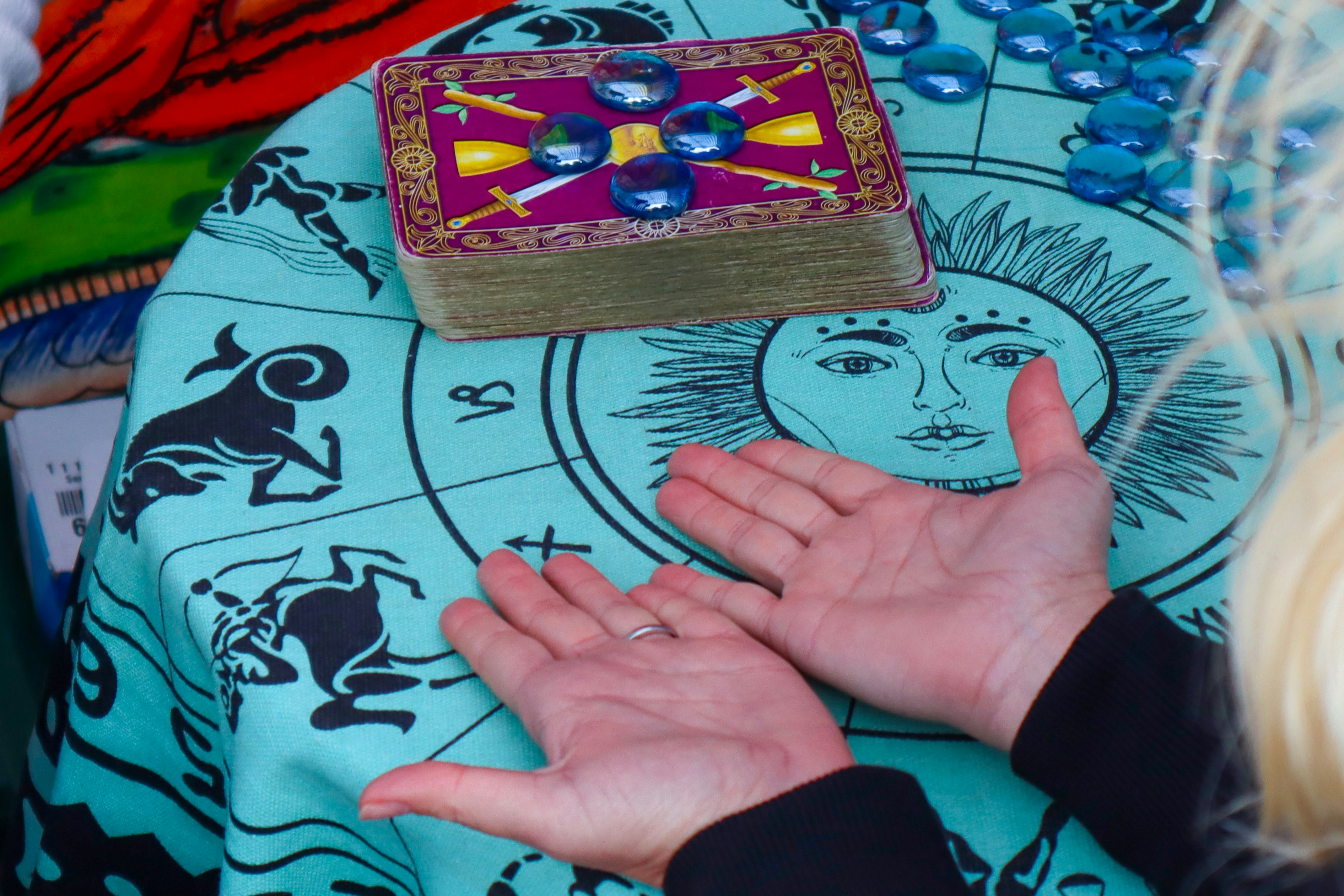
Introduction to the 5th House in Vedic Astrology
The 5th house in Vedic astrology is a critical component of an individual’s astrological chart, representing numerous facets of life that contribute to personal fulfillment and expression. This house is traditionally associated with creativity, romance, children, and the pursuit of pleasure. Unlike Western astrology, which often emphasizes personality traits and psychological analysis, Vedic astrology places a stronger emphasis on one’s karmic path and the impact of celestial bodies on practical life experiences. In this framework, the 5th house serves as a vital area where the influences of various planetary positions can emerge, shaping an individual’s journey in creative and relational dimensions.
Creativity, represented by the 5th house, encompasses artistic expression, intellectual pursuits, and the joy found in hobbies. It indicates how individuals engage with the world in imaginative ways, whether through art, writing, or other forms of self-expression. In Vedic astrology, a well-placed planet in the 5th house can enhance these creative tendencies, fostering a rich and fulfilling life centered around personal passions.
In addition to creativity, this house governs matters related to romance and love affairs. The 5th house depicts the early stages of romantic relationships, characterized by attraction and excitement. In contrast to the 7th house, which focuses on long-term partnerships and marriage, the 5th house is more about the initial romantic connections that often define an individual’s experiences with love.
Furthermore, the 5th house holds considerable significance regarding progeny. It reflects one’s potential for having children and the joy derived from parenthood. This aspect often ties in with one’s ability to nurture and instill values in the next generation, thereby highlighting the house’s multifaceted role in the broader context of life experiences and personal development.
The Symbolism of the 5th House
The 5th house in Vedic astrology plays a crucial role in representing a myriad of symbols and attributes that are foundational to human experience. Central to the significance of this house are themes of self-expression, joy, intelligence, and creativity. This house is often referred to as the house of creativity, encapsulating not only artistic endeavors but also intellectual pursuits that bring delight and fulfillment.
Self-expression is a key theme linked to the 5th house. It empowers individuals to engage with their own unique talents and share them with the world. This house encourages personal creativity and allows people to explore their passions, whether through art, music, literature, or other expressive forms. The activities associated with the 5th house can provide immense joy, making it a fundamental area when assessing the overall happiness and emotional satisfaction of an individual.
Additionally, the 5th house is intimately connected with intelligence. It represents the ability to process and utilize knowledge effectively. The insights gained from the 5th house can influence an individual’s approach to education and learning. An expansive 5th house suggests an individual who thrives in scholarly activities, often leading them to engage deeply with subjects that intrigue them.
Moreover, the influence of various planets positioned within or aspecting the 5th house further enriches its symbolism. Each planet brings its own traits and energies, shaping the ways creativity and intelligence manifest in daily life. For example, a strong Venus here may enhance artistic capabilities, while Jupiter might foster philosophical pursuits. Understanding these planetary influences enables a more nuanced interpretation of one’s creative potential and joys.
The 5th House and Love Affairs
In Vedic astrology, the 5th house plays a significant role in shaping one’s experiences with love affairs and romantic relationships. This specific house is primarily associated with creativity, self-expression, and pleasure, all of which intertwine with the nature and dynamics of love in one’s life. The connections formed under the influence of the 5th house can range from passionate romances to more casual flings, emphasizing the diverse spectrum of love relationships.
Casual romances and flings are often highlighted by the influence of planets residing in the 5th house. Such relationships are typically characterized by a sense of fun and adventure, devoid of liabilities that more committed relationships might impose. In this context, individuals may find themselves enjoying fleeting moments of affection and attraction without the weight of long-term intentions. The act of engaging in such casual encounters can provide a sense of freedom and spontaneity, which is often attributed to the creative energies of the 5th house.
On the other hand, the 5th house also governs more passionate connections, where emotional depth and intensity play a crucial role. These love affairs can often spark a sense of inspiration and artistic expression, as lovers intertwine their lives in more meaningful ways. In this realm, one’s love life becomes a canvas where creativity flourishes, and the joyful expression often fuels the romantic bond between partners.
To encapsulate, the 5th house in Vedic astrology offers profound insights into the nature of one’s love affairs. Recognizing the balance between casual encounters and passionate relationships is essential to understanding how this house influences personal connections, blending the joyous elements of love with the creative spirit that defines human experiences.
The Role of the 5th House in Creativity
The 5th house in Vedic astrology serves as a pivotal domain for creative expression, encompassing various forms of artistic pursuits, hobbies, and avenues for self-actualization. This house is intrinsically linked to individual talents, illuminating how one can harness their creative powers to manifest unique ideas and feelings. When assessing the 5th house, it becomes apparent that it embodies not just conventional arts but also broader expressions of creativity that can include writing, music, painting, and even innovative problem-solving.
Creative talents often find their roots in the 5th house, where the planetary influences can inspire individuals to engage in activities that resonate with their passions. For instance, strong planetary placements within this house may nurture a propensity for performing arts or visual creativity, enabling one to translate their inner thoughts and emotions into tangible works. The 5th house, therefore, functions as a catalyst where imagination meets realization, allowing for exploration and experimentation across multiple creative outlets.
Moreover, engaging in creative activities can provide an essential means for self-expression and fulfillment, helping to cultivate one’s identity. The 5th house also relates to hobbies and leisure activities that not only act as a source of joy but also serve as a medium for personal growth. Through artistic and creative endeavors, individuals may discover deeper aspects of themselves, offering insight into their desires and aspirations. The exploration of such creative talents not only enriches personal life but also fosters deeper connections with others who share similar interests.
Thus, the 5th house unequivocally plays a significant role in shaping one’s creative journey, highlighting the importance of cultivating these outlets for a balanced and enriched life.
Children and the 5th House
The 5th house in Vedic astrology is profoundly significant, as it serves as the primary domain of progeny, creativity, and self-expression. This house governs the relationship one has with children, encompassing aspects such as their upbringing, education, and the happiness they yield to parents. In astrological terms, the 5th house is considered a beneficial house, often associated with the blessings of children and the joy they bring into familial life.
When analyzing the 5th house, the position of planets within this region can significantly influence not only the nature of the children but also how parents engage with them. For instance, a strong placement of benefic planets, such as Jupiter or Venus, may indicate well-adjusted and happy children, potentially excelling in their educational pursuits. Such planetary positions often suggest an environment that is nurturing and supportive, allowing creative talents to flourish. Conversely, a malefic influence might lead to challenges in a child’s life, which in turn could affect their relationship with their parents.
Additionally, the 5th house dictates the emotional bonds formed between parents and their children. The qualities of children, such as creativity and intelligence, are typically reflections of the energies present in this house. For instance, a parent with a strong 5th house may express greater joy in activities with their children, nurturing their creative pursuits and fostering an environment of learning and fun. Thus, the 5th house not only prescribes the life path of children but also illustrates how parental attributes and characteristics interplay with the upbringing and development of the next generation.
Ketu and Rahu’s Influence on the 5th House
In Vedic astrology, the lunar nodes, Ketu and Rahu, hold significant influence over various aspects of life, including the 5th house, which is associated with love, creativity, and children. Ketu represents spiritual detachment and liberation, while Rahu embodies material pursuits and desires. Their positioning in the 5th house can lead to transformative experiences, fundamentally altering the inherent themes of this space.
When Ketu resides in the 5th house, it often signifies a journey towards emotional and creative enlightenment. Individuals may find that their approach to love becomes more introspective, urging them to navigate relationships with a deeper understanding of their spiritual essence. This placement might lead to unconventional expressions of love and creativity. Those influenced by Ketu may develop unique artistic visions or be drawn towards esoteric cultural pursuits. However, there can also be challenges, such as struggles with detachment from conventional romantic relationships or disinterest in the traditional roles associated with parenting. The karmic influence of Ketu can bring lessons centered around self-discovery and the importance of connecting with one’s inner self.
Conversely, Rahu in the 5th house often brings a heightened focus on romance, creativity, and the desire for children. It amplifies the native’s desires, prompting them to seek out relationships with intensity and passion. Rahu tends to generate a fascination with creative pursuits, driving individuals to explore various artistic endeavors to achieve recognition and success. However, this influence can sometimes lead to a superficial approach to love, emphasizing material aspects rather than emotional depth. The interplay of Ketu and Rahu in the 5th house underlines the duality of seeking meaningful connections while balancing the pursuit of individual ambitions.
Ultimately, the impact of Ketu and Rahu on the 5th house serves as a reminder of the karmic lessons required in navigating love, creativity, and parenting. Embracing the unique attributes of these lunar nodes can provide valuable insights into one’s relationships and creative expressions.
Transits and the 5th House
In Vedic astrology, the 5th house is closely associated with love, creativity, and children. Planetary transits have a significant influence on the energies within this house, affecting various aspects of life related to romance and artistic expression. When planets move through or aspect the 5th house, they can evoke a range of experiences, both positive and challenging.
Beneficial transits, such as those from Venus or Jupiter, often enhance the energies of creativity and love. For instance, when Venus transits the 5th house, individuals may find themselves more open to romance, experiencing heightened attraction and affection. This period is often characterized by creative inspiration, which can manifest through art, writing, or any form of self-expression. Additionally, such positive transits may also herald joyful experiences related to children or children in one’s life, whether it be personal progeny or interactions with youths that spark happiness.
On the other hand, challenging transits from planets like Saturn or Mars can manifest difficulties in the realms of love and creativity. For example, a Saturn transit might pressure individuals to face the realities of their romantic relationships, potentially leading to conflicts or a reassessment of commitments. Such influences can instigate feelings of inadequacy regarding creative pursuits, often resulting in a temporary decline in motivation or inspiration. It is crucial to recognize such challenges as opportunities for growth, pushing individuals to confront and resolve underlying issues within their romantic or creative endeavors.
In summary, understanding the impact of planetary transits on the 5th house can provide valuable insights into one’s experiences regarding love and creativity. By being aware of these astrological shifts, individuals may better navigate the influences that arise, embracing both the positive and negative changes that come with these celestial movements.
Case Studies: Famous Personalities and the 5th House
The 5th house in Vedic astrology represents various aspects of life, such as creativity, love, and children. To illustrate the significance of this house, we can examine the lives of prominent personalities whose experiences reflect strong characteristics associated with the 5th house. By studying these case studies, we gain insights into how the themes of artistic talent, romantic relationships, and parenting are interconnected within the framework of Vedic astrology.
One notable example is the celebrated Indian filmmaker Satyajit Ray, who is often regarded as one of the greatest directors in the history of cinema. Ray’s artistic brilliance and storytelling abilities are hallmarks of 5th house influence. His works not only convey profound narratives but also showcase a keen understanding of human emotions and relationships, elements that resonate deeply with love and creativity. Furthermore, Ray’s commitment to his craft can be seen as a passionate pursuit that aligns with the artistic inclinations associated with the 5th house.
Another prominent figure is the renowned American author Maya Angelou. Her powerful literary voice and poetic expressions reveal the creative potential linked to the 5th house. Angelou’s life narrative is enriched by her multifaceted relationships, embodying the complexities of love and attachment. As a mother and mentor, she also exemplifies the nurturing aspects of parenting, further integrating the themes of children that the 5th house governs. Her tales of resilience and empowerment serve as an inspiration, demonstrating how the themes of love and creativity manifest in her life.
These case studies reinforce the notion that the 5th house plays a significant role in shaping the experiences of individuals, influencing their artistic expression, romantic endeavors, and parental relationships. By analyzing the lives of such notable figures, we can better appreciate the intricate connections between the celestial influences of the 5th house and the tangible outcomes in their personal and professional lives.
Conclusion: Embracing the Energies of the 5th House
The 5th house in Vedic astrology serves as a pivotal domain, intricately weaving aspects of love, creativity, and the joys and responsibilities of parenthood. Throughout this exploration, we have delved into how the positions of celestial bodies within this house can profoundly influence our experiences and relationships. This house is not merely a segment of our astrological chart; it represents a rich tapestry of emotional expression, artistic endeavors, and the nurturing of future generations. Each planet’s placement, along with its aspects, adds unique dimensions to how we engage with these vital aspects of life.
As we examine our own charts, it is invaluable to connect with the energies emanating from the 5th house. For individuals seeking love, understanding the implications of this house can illuminate how romantic relationships manifest. Similarly, those involved in creative pursuits may find inspiration and motivation derived from the planetary influences in this house, which often reflect their innate talents and artistic visions. Furthermore, the role of the 5th house in parenthood is crucial, highlighting the significance of guidance and nurturing towards the next generation.
Recognizing the influences of the 5th house encourages us to harness these energies, fostering a deeper appreciation of their lessons. Whether it’s cultivating our passions, connecting with loved ones, or navigating the responsibilities of parenthood, understanding this astrological house enables us to align more harmoniously with the experiences we encounter. Ultimately, the 5th house invites us to embrace joy, creativity, and love, shaping our personal journey in profound and meaningful ways.


